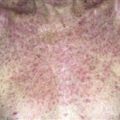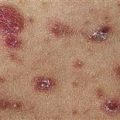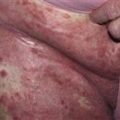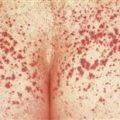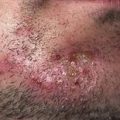117
Dermatofibroma
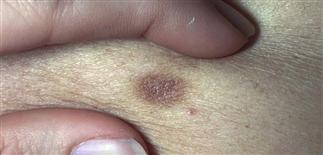
Dermatofibromas are commonly benign, firm dermal nodules that arise spontaneously.
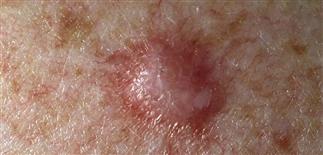
Early lesions are elevated, hard, and pink and may be pruritic or tender. Typically, there is a ring of hyperpigmentation peripherally.
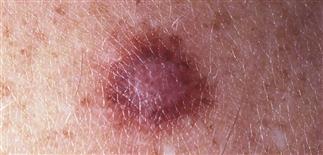
Most dermatofibromas lesions are dome-shaped, although some are depressed below the surrounding skin surface.
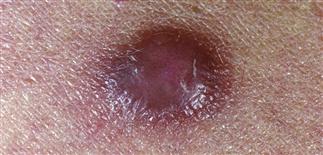
Rarely, lesions may be blue or black as the result of hemosiderin deposition and resemble melanoma.
DESCRIPTION
Dermatofibromas are common, benign, firm, dermal papules. The etiology is unknown. They seem to arise spontaneously in adults and occasionally occur in children. Controversy exists as to whether the lesion represents a spontaneous benign neoplastic process or reactive hyperplasia in response to injury.
HISTORY
• Dermatofibromas may be asymptomatic, but more commonly tender or pruritic. Some patients note itching when the lesion is first noted and attribute this to an insect bite. Most patients do not recall a specific trauma to the area. • These lesions occur more often in women. • Most are asymptomatic, but itching and tenderness is not uncommon. • Dermatofibromas tend to persist indefinitely, while remaining stable in size and appearance. They have no malignant potential but can be confused with various types of skin cancer.
PHYSICAL FINDINGS
• Dermatofibromas are discrete, firm, pink dermal papules typically 3–7 mm in diameter. Rarely, lesions may be larger than 3.0 cm. • Most dermatofibromas are dome-shaped, although some are depressed below the surrounding skin surface. The lesion is fixed within the skin but movable over the underlying subcutaneous fat. • On palpation, the lesion feels like a firm button. Pinching a dome-shaped dermatofibroma between two fingers causes the lesion to dimple below the level of surrounding skin. • Dermatofibromas are typically flesh-colored to pink with a poorly defined rim of tan to brown pigmentation. Rarely, lesions may be blue to black as a result of hemosiderin deposition, which may resemble melanoma. The surface may be smooth, shiny or scaly and excoriated. • Although dermatofibromas may arise on any cutaneous surface, most are found randomly distributed on the extremities. Rarely, dermatofibromas occur on palms or soles. • Lesions are usually solitary; however, multiple lesions can occur, especially on the legs. • Dermatofibromas should be stable in size, appearance, and color. If they are not, they should be biopsied to confirm their benign nature.
TREATMENT
• Dermatofibromas do not require treatment unless they are symptomatic, repeatedly traumatized, or cosmetically bothersome. • Surgical excision with primary closure is the treatment of choice for symptomatic lesions. • If incompletely excised, the patient should be warned of possible recurrence.

